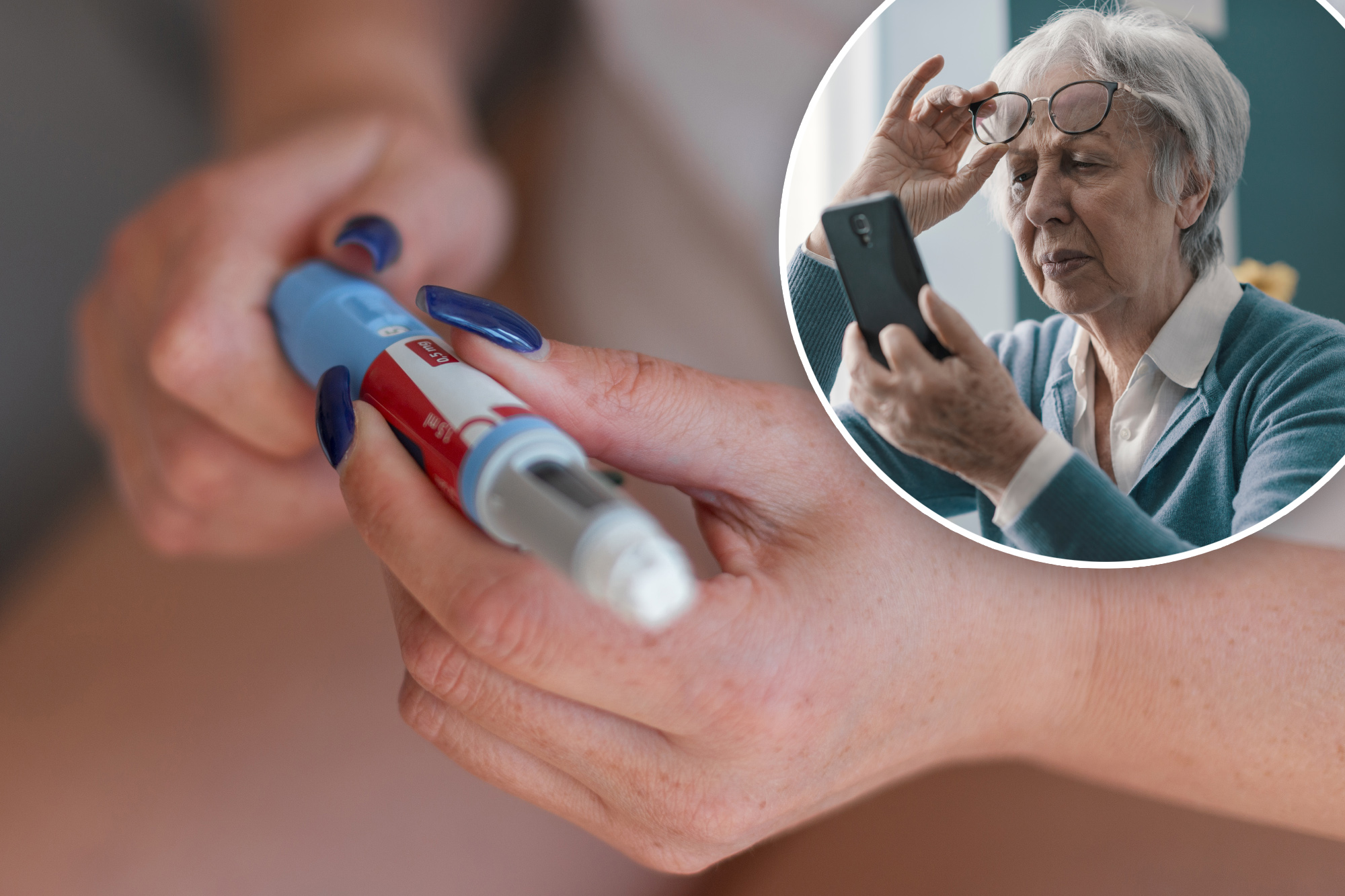An increasing number of Ozempic and Mounjaro users shared strong notices after they were blind while using GPP-1 medicine.
Now a new study is launching the relationship between diabetic GLP users and the high risk of age-related eye diseases.
But, although apparently alarming, a doctor explained to the publication why he really does not think he should move away from the dagger.
Posted in Jama Ophtalmology, the study was removed from health records of about 140,000 patients.
Researchers found that after a year, GLP-1 users had more than double the probabilities of developing a macular degeneration related to the neovascular age than those who did not take drugs.
Age -related macular degeneration (AMD) is a disease that gradually harms the macula, the part of the retina of the eyes responsible for the central and clear vision. As he gets worse, people are getting harder and harder to see things directly in front of him, while his peripheral vision remains largely without affecting.
In the elderly, the AMD is the leading cause of irreversible blindness.
The study found that the risk percentage was 0.2% in GLP-1 and 0.1% users in non-users.
About 20 million adults in the United States live with AMD, which is presented in two types.
The slowest dry AMD constitutes approximately 80% of cases. It occurs when the macula becomes thinner with age, often due to the accumulation of yellow protein deposits known as Drusen, according to the American Academy of Ophthalmology.
The wet AMD, also known as AMD Neovascular (NAMD), although less common, is much more aggressive, causing loss of quick and severe vision. In this way, the function of the macula is committed to the growth and leakage of abnormal blood vessels under the retina. The condition is commonly treated with frequent injections to restore or stabilize vision.
“What the researchers in the latter study specifically sought was whether or not it was people who became the dry form of macular degeneration, which is where you do not have abnormal blood vessels in the wet form, which is when you do,) Dr. Talia Kaden, director of the Northwell Health Retina Fellowship, told The Post.
But Kaden said that, although there are reasons for concern, he actually believes that there is a relatively low risk.
“We are talking about a good number of patients who could increase retinopathy compared to the millions of patients of these medicines.”
Talia Kaden
“This 2x number is really powerful, but when we look at the data in the rough, I don’t think it’s a punch so strong. I don’t think the number should be a reason for people to be in these drugs. I think, however, it is worth continuing,” he said.
This study is added to a growing research body that documents vision problems in patients using GLP-1 medicines.
A review published earlier this year at Jama Ophtalmology discovered at least nine cases of patients who suffered loss of vision after taking a semaglutide or pyrene, the active ingredients in Wegovy and Zepbound, respectively.
And a study of 2024 suggested a potential bond between semaglutid and the rare non -Ischemic Optician -Ischemic Opticia -Ischemic Condition (Naion), in which the restricted blood flow to the optic nerve causes sudden loss of vision.
“None of these studies are definitive to identify that there has been a change. Some of them show a slight increase, but we are talking about a good number of patients who may have an increase in retinopathy compared to the millions of patients of these medicines,” said Kaden.
Researchers believe that the decrease in blood glucose levels caused by GLP-1 can trigger abnormal growth of blood vessels in the retina. In addition, there are GLP-1 receptors in the retina and these drugs increase the levels of molecules that lead to the formation of harmful blood vessels.
“Seeing such a clear signal in our study was striking,” said Co -author Ret Shor of the University of Toronto in Stat.
“The absolute risk is still low, but the advanced form of AMD is a condition with serious implications for vision and quality of life. So a double risk is clinically significant, especially for vulnerable populations such as the adults who may already have a high initial risk.”
Shor and his team indicate that more research is needed to determine if the direct or indirect effects cause an increase in the risk of NAMD.
Shor and Kaden maintain that these findings should not be alarm reasons or a reason to stop the recipe or use of these medicines; Rather, patients need to be aware of the risk and control their vision accordingly.
Kaden, study authors and other experts recommend that GLP-1 users are looking for vision changes that may indicate Early AMD signs.
“We really want you to look for anything blurred, any new distortion. If you are looking at a signpost or a door frame, it should be a straight line. If suddenly this line seems wavy or curved, this is a reason to look for a consultation with a retina specialist,” said Kaden.
#OZEMPIC #develop #weakening #condition #means #risk
Image Source : nypost.com
